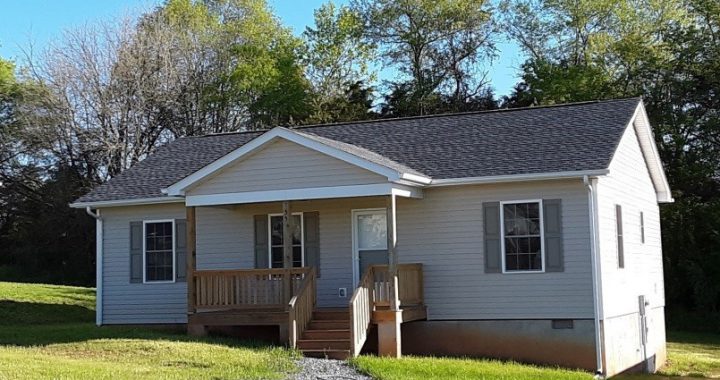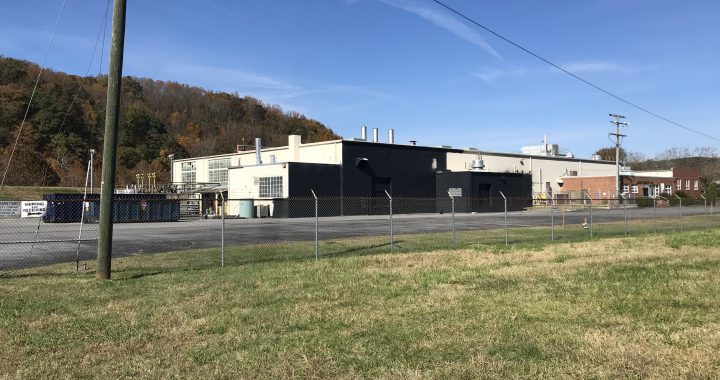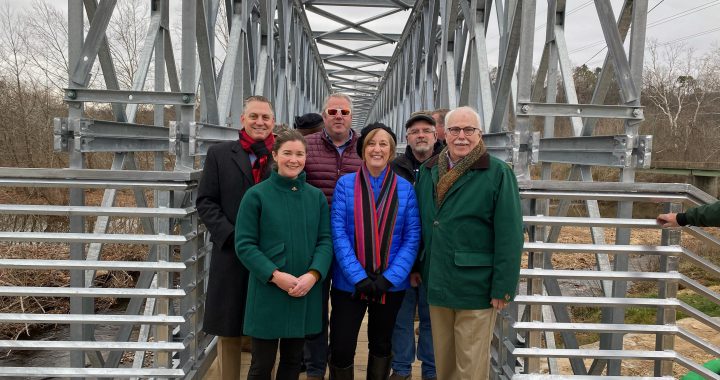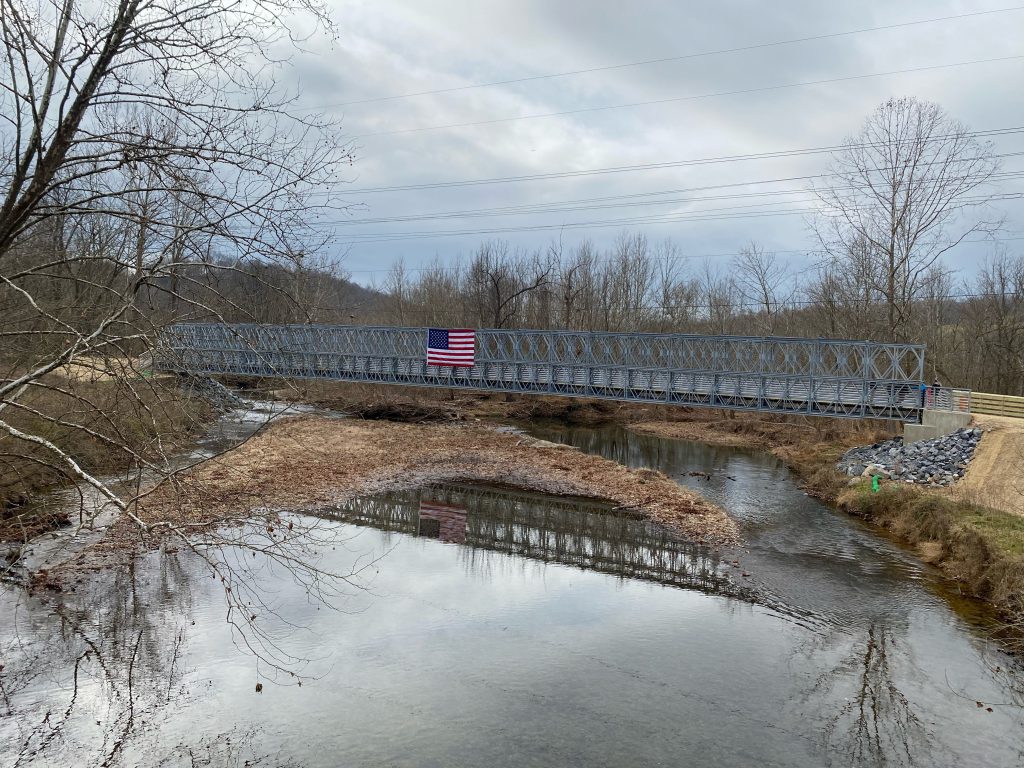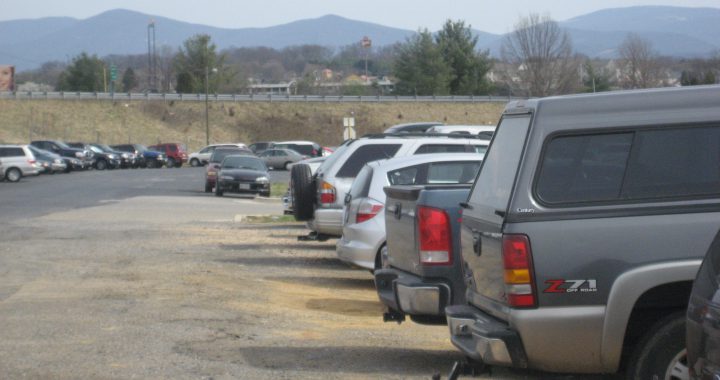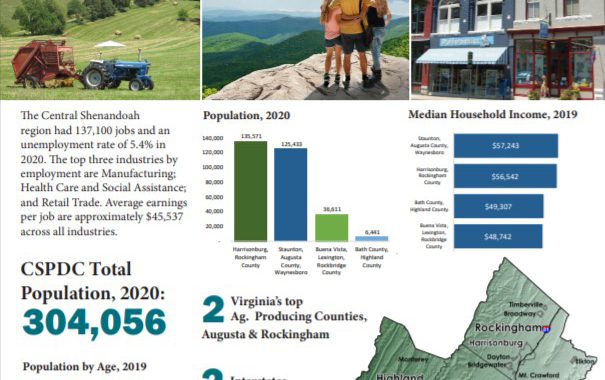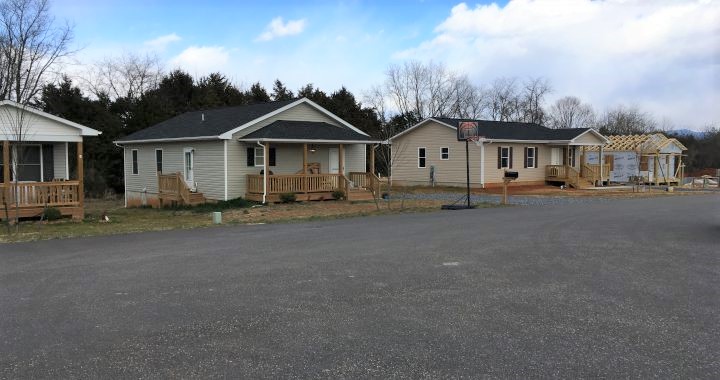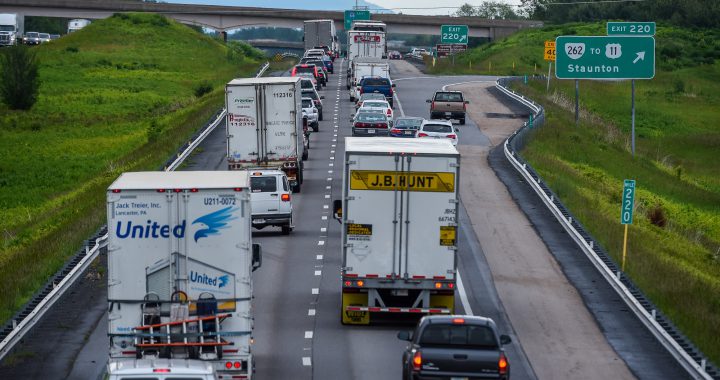Over the last several months the GO Virginia Region 8 Shenandoah Valley Sites Enhancement Project has been making quick progress in completing necessary due diligence on significant and attractive sites throughout the region. The project will expand our region’s capacity to attract new business investment by advancing the Virginia Economic Development Partnership Business Ready Tier level for sites located throughout the Shenandoah Valley. Activities include wetlands delineation, geotechnical exploration, boundary survey, topographical survey, cultural resource review, threatened and endangered species review, Phase 1 environmental site assessment and master planning. Our region’s close proximity to interstate, rail, and airline transportation, as well as the Port of Virginia makes the Valley a well-suited location for new or expanded business, however, lack of ready-sites has been a significant reason for loss of prospects in the past. Project completion is expected by Q2 of 2022.
Category Archives: News
PDC Housing RFP Released
Applications for affordable housing developers seeking funds through the PDC Housing Development Program are now open. In July 2021, the CSPDC was awarded $2 million in funding to support the creation of new affordable housing units. Specifically, the CSPDC is positioned to provide gap funds toward the creation of at least 20 affordable units by July 1, 2024. The CSPDC has released a Request for Proposals for non-profit, public, and private affordable housing developers seeking gap funds for proposed affordable housing development. The application will remain open until Thursday, February 3rd, 2022 at 5pm. Applications will be reviewed by a panel of CSPDC staff, and funding decisions will be made in March 2022. Application materials can be found on the CSPDC website at https://www.cspdc.org/programs-services/housing/, and should be submitted to Olivia Raines at olivia@cspdc.org.
On Wednesday, January 12th from 9am-11am, the CSPDC will be hosting an ‘Office Hours’ session for those interested in applying for PDC Housing Development Program funds that have questions about the application process. Click here to download the calendar invite. For additional guidance or to see if your project is eligible, please see our RFP Guidelines, or contact Olivia Raines.
Ag Innovation Center in Buena Vista Receives GO Virginia Funds
This December, the GO Virginia State Board awarded The Advancement Foundation a $550,000 Per Capita Grant for an Ag Innovation Center in downtown Buena Vista. The Advancement Foundation will repurpose a vacant industrial site into a multiuse manufacturing, business incubation, and product development facility. GO Virginia funds will support staff and programming at the Ag Innovation Center. The project aligns with the City of Buena Vista’s new Downtown Revitalization Plan, as well as the CSPDC’s Ag Enterprise Feasibility Study and JMU’s Industrial Hemp Study (two GO Virginia-funded initiatives). CSPDC staff assisted the grant application and will administer the GO Virginia grant.
CSPDC Staff Gives Back
Many organizations have “Casual Fridays”, a perk for employees to end the work week in more comfortable clothing. For CSPDC staff, the opportunity to wear jeans on Fridays is granted by making a small monetary contribution. Over many years, the CSPDC’s “Jeans For Charity” Program has made donations to help people throughout the Region and beyond. In 2021, staff contributed more than five hundred dollars ($500.00) to a variety of organizations. Through these donations, the CSPDC supported an organization that provides transportation services to low income individuals trying to get to work; sponsored a staff member who participated in the Alzheimer’s Association Walk; supplied people in need with food, clothing, and furniture; assisted Afghan refugees who have moved into the Region; helped people hospitalized with mental illness with clothing and personal needs; and made Christmas brighter for children who have very little. Fridays for CSPDC staff are more than “casual”, it is a day to extend a helping hand to those in need.
Chessie Trail Bridge Opens
Virginia Military Institute and project partners including Rockbridge County, the cities of Buena Vista and Lexington, and Friends of the Chessie Trail cut the ribbon on a new bridge over the South River on December 10th. The ribbon-cutting marks the culmination of a multi-year effort to secure grant funding, design, and construct a bridge to replace an original railroad bridge that was damaged and scrapped after Hurricane Isabel flooded the area in 2003. The missing bridge created a significant gap in the seven mile-long Chessie Trail, which connects Lexington to Buena Vista. For more than ten years, Chessie Trail users had to take a circuitous on-road detour to travel the length of the Trail. In 2016, CSPDC assisted VMI and local partners with a U.S. DOT Eastern Federal Lands Access Program (EFLAP) grant application to construct a new bridge. EFLAP awarded VMI nearly $2 million for the project, which broke ground in December 2020.
Waynesboro Park and Ride Lot Upgraded
The expansion of the Town Center Park and Ride commuter lot in Waynesboro, which began construction in March 2022, was completed in November 2021. The $1 million project increased parking capacity from 120 to 175 parking spaces, installed a bus pull off and two covered bus shelters, and repaved and improved on location lighting. Additional amenities included bicycle racks, sidewalks, landscaping, and infrastructure to accommodate future electric vehicle charging stations.
In the first two months of operating, the Afton Express stopped at Town Center, at an existing bus shelter near Target. Afton Express buses now stop at the new, dedicated bus pull off in the enhanced commuter lot.
2021 Facts & Figures Documents Published
One of the CSPDC’s roles in economic development is to be a resource for data about the region and the PDC’s localities. To help support this important function, the CSPDC creates and distributes Facts & Figures, an easy-to-read snapshot of each sub-region’s people, jobs, schools, and other unique attributes. The 2021 Facts & Figures documents are now available on the CSPDC website.
PDC Housing Development Program Kicks-Off
In July, the CSPDC announced that it received $2 million in funding towards the development of new housing initiatives in our region through Virginia Housing’s PDC Housing Development Program. Through this grant, the CSPDC will award gap funding to non-profit, private, and public sector developers to go toward the creation of at least 20 affordable housing units in the region by July 2024.
On December 9th, the CSPDC held a housing roundtable – the meeting provided an overview of the PDC Housing Development Program, and provided information on the requirements and timeline for the grant. CSPDC staff also provided a data overview on the ‘State of Housing’ in our region, and facilitated a discussion around affordable housing opportunities and challenges. More than 70 participants registered the event, including representatives from member local governments, non-profits, and private development firms.
On January 3rd 2022, the CSPDC will release a Request for Proposals for affordable housing developers seeking grant funds. The RFP will remain open for a month, and will then be reviewed by CSPDC staff. The CSPDC expects to announce funding decisions by March 2022. More information on the PDC Housing Development Program, including RFP information and grant guidelines, can be found here. The CSPDC will release guidelines in advance of the grant application on Wednesday, December 15th.
$1.2 Trillion Infrastructure Investment and Jobs Act Passed in November
President Biden signed the $1.2 trillion Infrastructure Investment and Jobs Act (IIJA) into law on November 15, 2021. The bill covers spending from FY22 through FY26, and includes reauthorization of the FAST Act, the prior five-year federal transportation spending plan.
Of the $1.2 trillion, $550 billion is new spending, and $284 billion is allocated for transportation improvements. The State of Virginia will receive $7 billion for highway improvements, $1.2billion for public transportation, $738 million for water infrastructure, $537 billion for bridge repairs, $106 million for electric vehicle infrastructure, and $65 million for broadband.
Funding through existing programs will begin within the next six months. New programs, such as for electric vehicle infrastructure, will likely take more time to begin. CSPDC staff will continue to track the bill, and will inform localities of upcoming IIJA funding opportunities
2022 Project Impact Calendars Now Available
The 2022 Shenandoah Valley Project Impact Preparedness Calendar will be available for pick-up the first week of December at local government buildings and libraries or by contacting the CSPDC. The calendar contains preparedness tips and mitigation strategies for dealing with severe weather, emergencies and disasters, as well as fun holidays for each day of the year.
This year, sponsorship of the calendar is being provided by Sentara RMH Medical Center. The theme of the 2022 calendar is “Community Heroes.” Using historic photos, each month highlights different ways members of our communities have stepped up to help us all navigate through the COVID-19 pandemic.
For additional information, contact Rebecca Joyce, at rebecca@cspdc.org or 540-885-5174 ext. 112.

